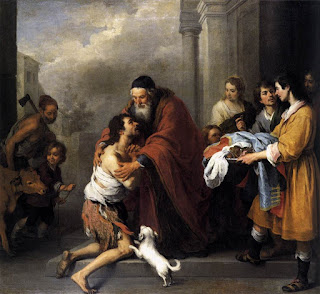Commentary
John 20: 1-9
Signs of God’s Action
Mary “came to the tomb … while
it was still dark.”
This darkness of nature points
to the darkness of Mary’s faith. [1] The passive use of the verb in the phrase “the stone removed
from the tomb” indicates the action of God. [2] But
Mary fails to recognize that something extraordinary has taken place. All she can see is that “they have taken the
Lord from the tomb, and we don’t know where they put him.”
She even includes others in her
darkness, thus “we don’t know” while
she has been the only person who has seen the stone removed and the empty tomb.
When Peter arrives, he sees
stone removed. Moreover, inside, he sees
the different the burial cloths and the cloth used for Jesus’ face “rolled up
in a separate place.” Again, the verb is
intentionally put in the passive voice.
Yet, there is no indication whether Peter believes or not. [3]
On the contrary, “the other
disciple” comes to believe when he sees the action of God in the stone being
removed and the burial cloths folded.
Faith helps us to see the hand
of God in the Resurrection of Christ, and the events of our lives.
In addition, we have the
guidance of “the Scripture,” which Mary, Peter, and the other disciple did not
have. [4]
Scripture, inspired and given by
the Holy Spirit, read with faith, shows us the hand of God in events of our
lives and human history. That is the
privilege we now enjoy, which Mary, Peter, and the other disciple did not.
-----------------------------
[1], [2] and [4] Francis J. Moloney, SDB., The Gospel of John.
Sacra Pagina Series, Collegeville, MN. Liturgical Press, 1998; p. 518.
[3] Francis J. Moloney, The
Gospel of the Lord, Reflections on the Gospel Readings Year C.
Collegeville, MN. Liturgical Press, 1991; p. 96.




